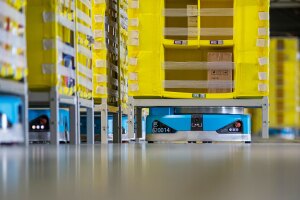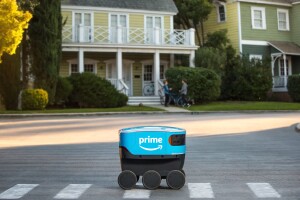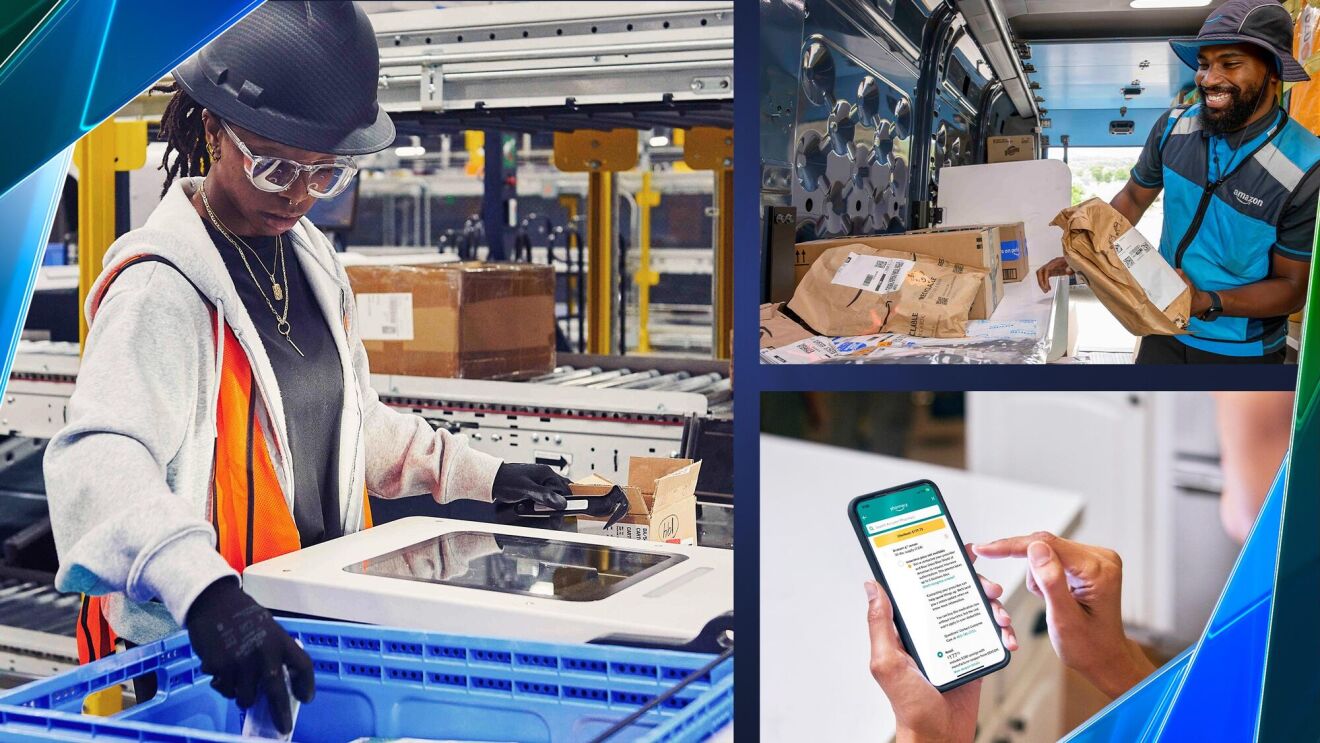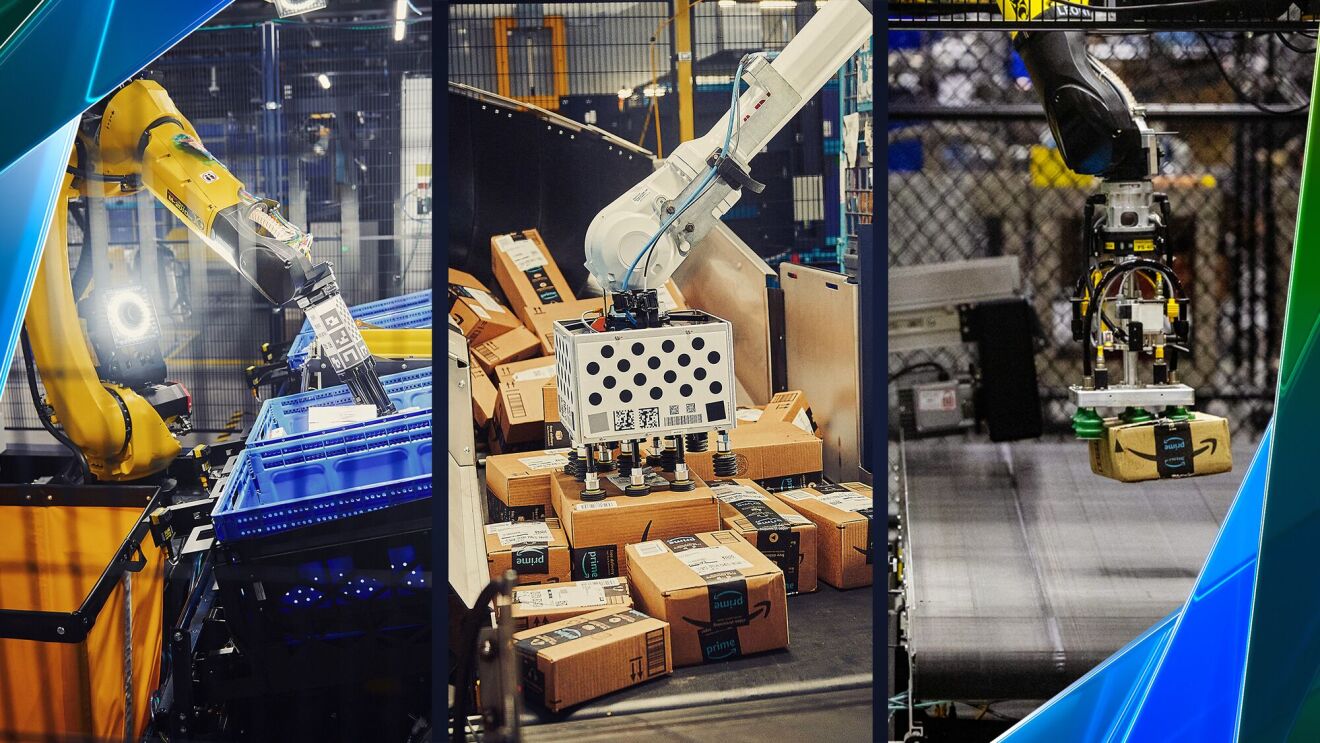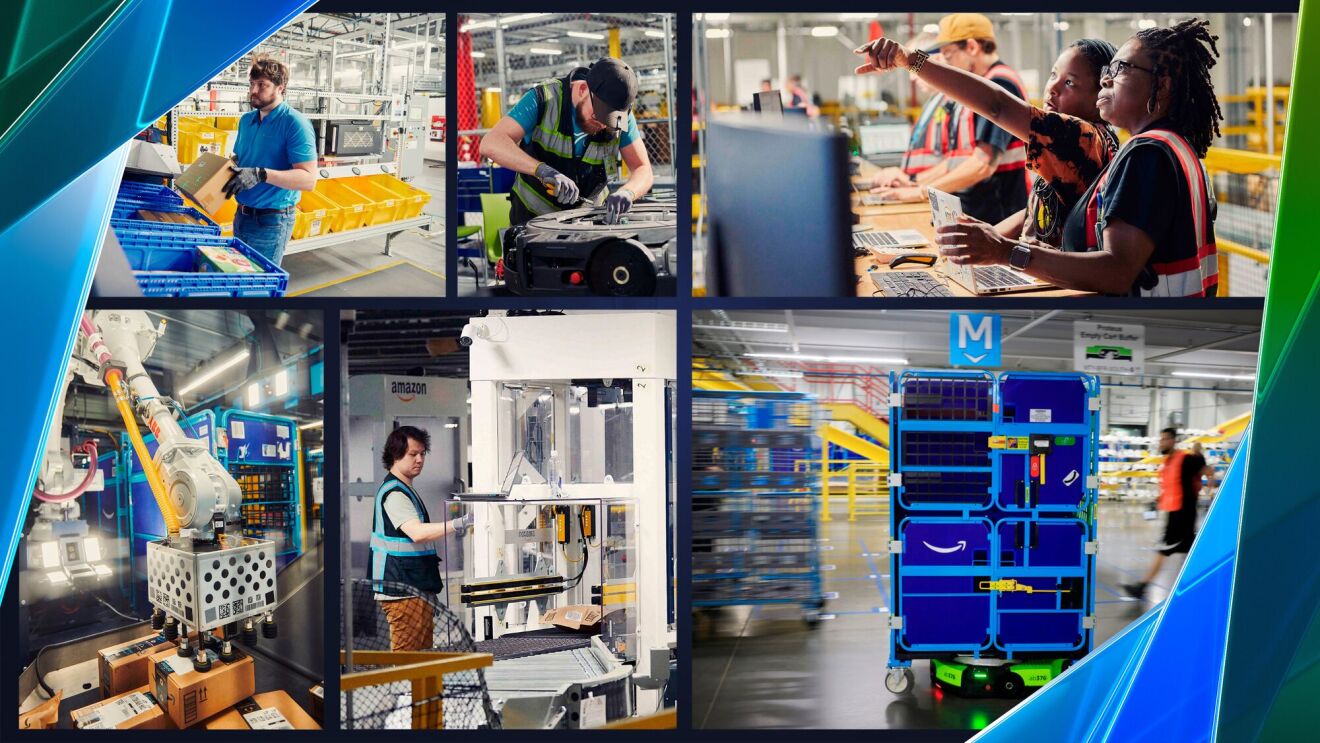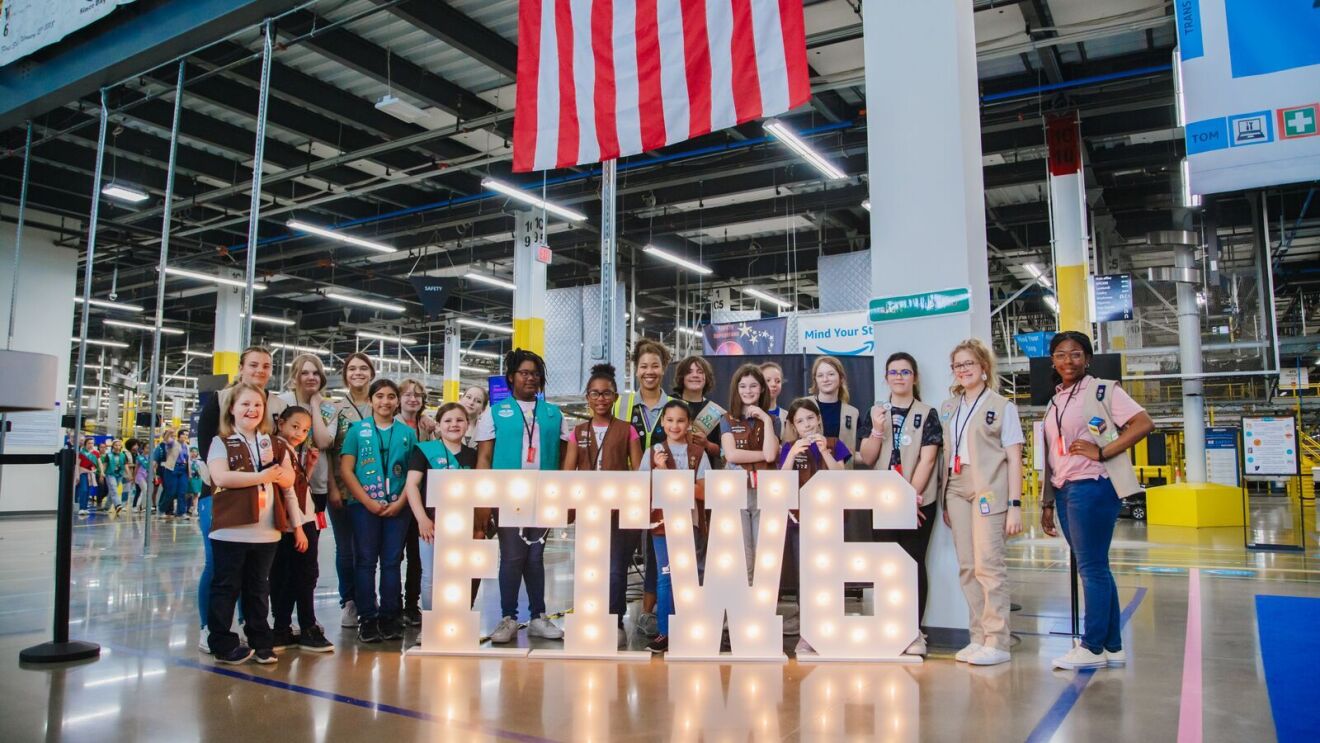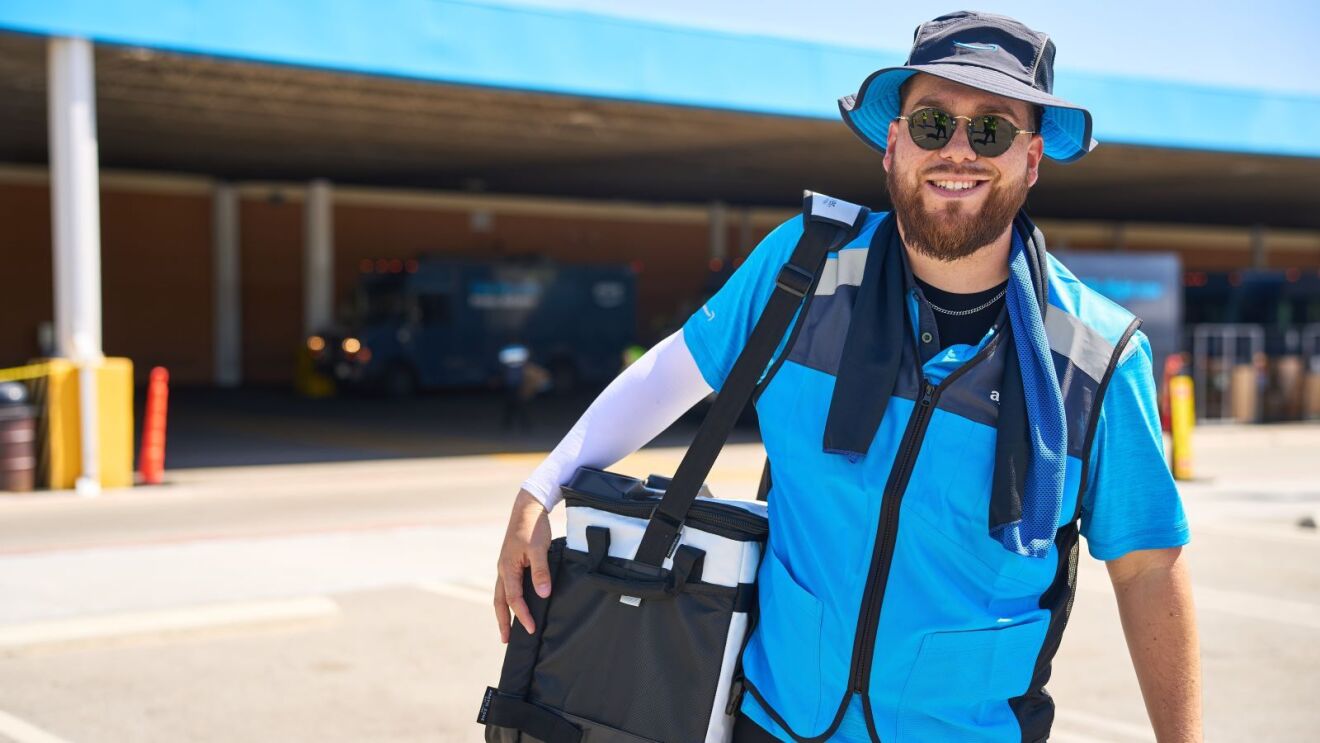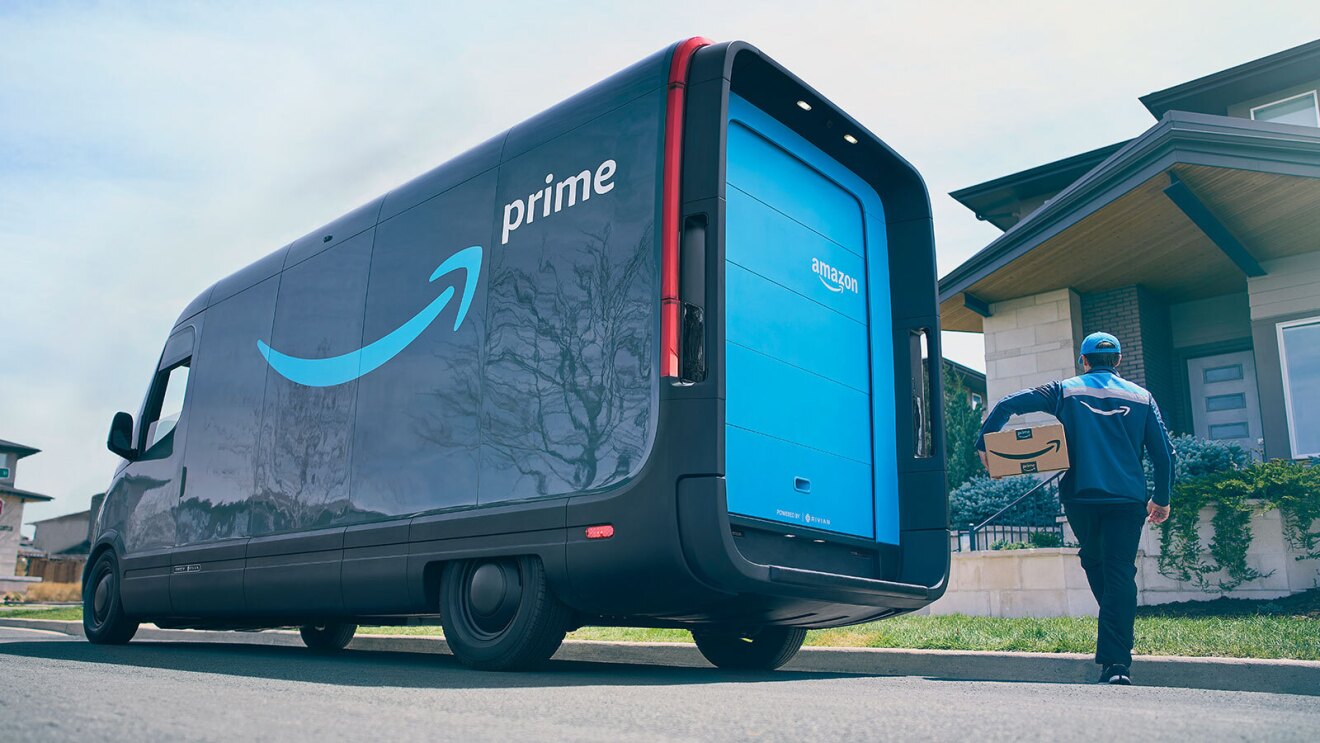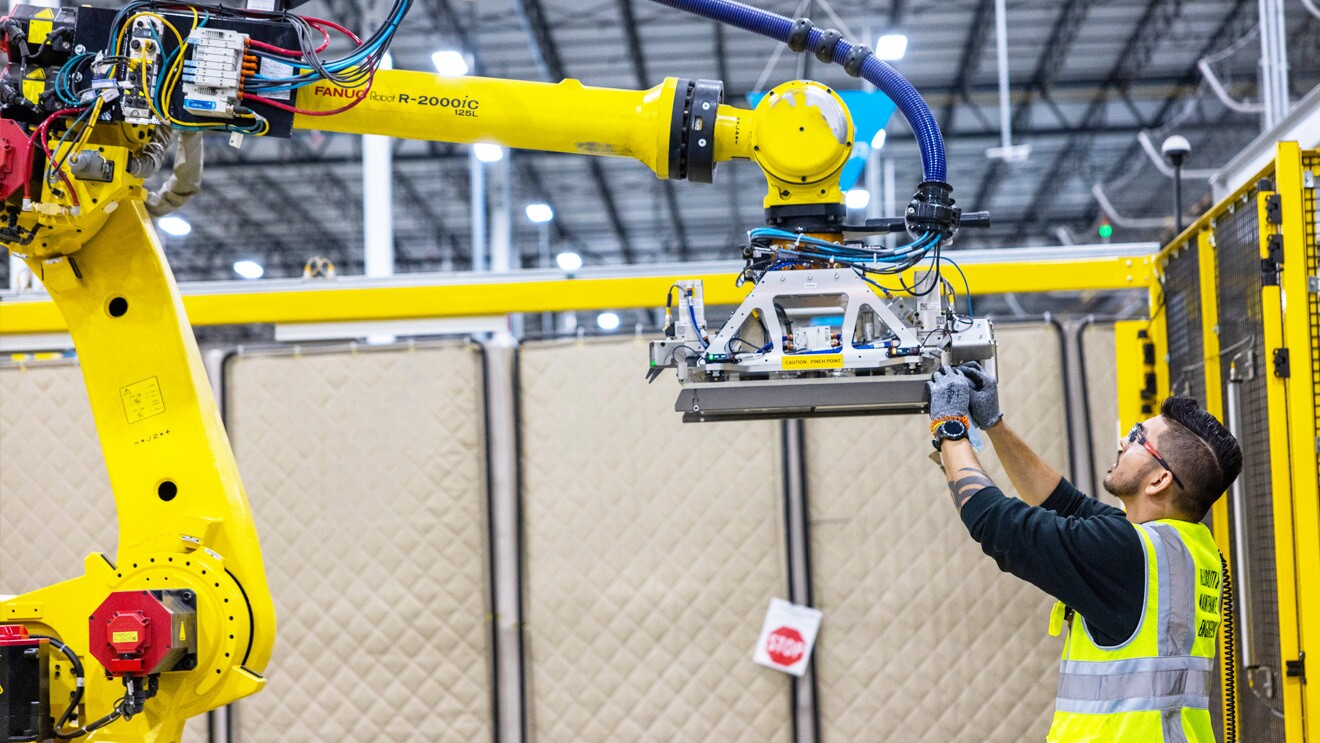It’s been a decade of discovery at Amazon. In 2012, we made a big investment to improve productivity in the supply chain by acquiring a robotics company called Kiva. Back then, we had some automation in our fulfillment centers, but the Kiva acquisition was a big bet in forecasting the role innovation would play in helping us meet our customers’ needs while making work safer, simpler, and more productive for employees. It was a bold move, and it transformed our business.
Speculation was rampant that Amazon was replacing people with robots. But 10 years on, the facts tell a different story. We have more than 520,000 robotic drive units, and have added over a million jobs, worldwide. We have more than a dozen other types of robotic systems in our facilities around the world, including sort centers and air hubs. From the early days of the Kiva acquisition, our vision was never tied to a binary decision of people or technology. Instead, it was about people and technology working safely and harmoniously together to deliver for our customers. That vision remains today.
01 / 02
While the Kiva acquisition kickstarted the use of robotics and other technology at our facilities, it was just the start of our robotics journey. We continued to innovate in new and exciting areas to improve the customer and employee experience and create an even safer workplace. And that innovation continues. Below are some of the latest technologies we’re inventing and investing in to create an even better workplace
Proteus
Proteus is our first fully autonomous mobile robot. Historically, it’s been difficult to safely incorporate robotics in the same physical space as people. We believe Proteus will change that while remaining smart, safe, and collaborative.
Proteus autonomously moves through our facilities using advanced safety, perception, and navigation technology developed by Amazon. The robot was built to be automatically directed to perform its work and move around employees—meaning it has no need to be confined to restricted areas. It can operate in a manner that augments simple, safe interaction between technology and people—opening up a broader range of possible uses to help our employees—such as the lifting and movement of GoCarts, the non-automated, wheeled transports used to move packages through our facilities.
Proteus will initially be deployed in the outbound GoCart handling areas in our fulfillment centers and sort centers. Our vision is to automate GoCart handling throughout the network, which will help reduce the need for people to manually move heavy objects through our facility and instead let them focus on more rewarding work.
Cardinal
The movement of heavy packages, as well as the reduction of twisting and turning motions by employees, are areas we continually look to automate to help reduce risk of injury. Enter Cardinal, the robotic workcell that uses advanced artificial intelligence (AI) and computer vision to nimbly and quickly select one package out of a pile of packages, lift it, read the label, and precisely place it in a GoCart to send the package on the next step of its journey. Cardinal reduces the risk of employee injuries by handling tasks that require lifting and turning of large or heavy packages or complicated packing in a confined space.
With Cardinal, package sorting happens earlier in the shipping process, resulting in faster process time in the facility. Amazon shipping operations run more smoothly because Cardinal converts batch-based manual work into continuous, automated work. We’re currently testing a prototype of Cardinal for handling packages of up to 50 pounds, and we expect to deploy the technology in fulfillment centers next year.
Amazon Robotics Identification
Feedback from employees led us to create Amazon Robotics Identification (AR ID), an AI-powered scanning capability with innovative computer vision and machine learning technology to enable easier scanning of packages in our facilities. Currently, all packages in our facilities are scanned at each destination on their journey. In fulfillment centers, this scanning is currently manual—an item arrives at a workstation, the package is picked from a bin by an employee, and using a hand scanner, the employee finds the bar code and hand-scans the item.
AR ID removes the manual scanning process by using a unique camera system that runs at 120 frames per second, giving employees greater mobility and helping reduce the risk of injury. Employees can handle the packages freely with both hands instead of one hand while holding a scanner in the other, or they can work to position the package to scan it by hand. This creates a natural movement, and the technology does its job in the background.
Containerized Storage System
Containerization products are another innovation that has improved safety in the workplace. In many Amazon fulfillment centers, employees currently pick or stow items onto mobile shelves as products move through the process of fulfilling customer orders. To reduce the need for employees to reach up, bend down, or climb ladders when retrieving items, we’ve been developing a robotic system that delivers products to employees in a more ergonomically friendly manner.
Our new Containerized Storage System puts employees in a safer and more ergonomic position through a highly choreographed dance of robotics and software. The system helps determine which pod has the container with the needed product, where that container is located in the pod, how to grab and pull the container to the employee, and how to pick it up once the employee has retrieved the product. As a result, our employees benefit from a more comfortable, safer experience.
Ten years have flown by, but the one constant has been our drive to improve the experience for our employees and customers. What started as an interesting acquisition has grown into a dedicated team of roboticists, engineers, software developers, ergonomic specialists, and other experts who have revolutionized our operations. Our facilities are safer and more collaborative than ever, and they play an integral role in delivering the products our customers want, when and where they want them. And what’s really exciting is that some of our most innovative work is yet to come—our next decade of discovery is just beginning.



